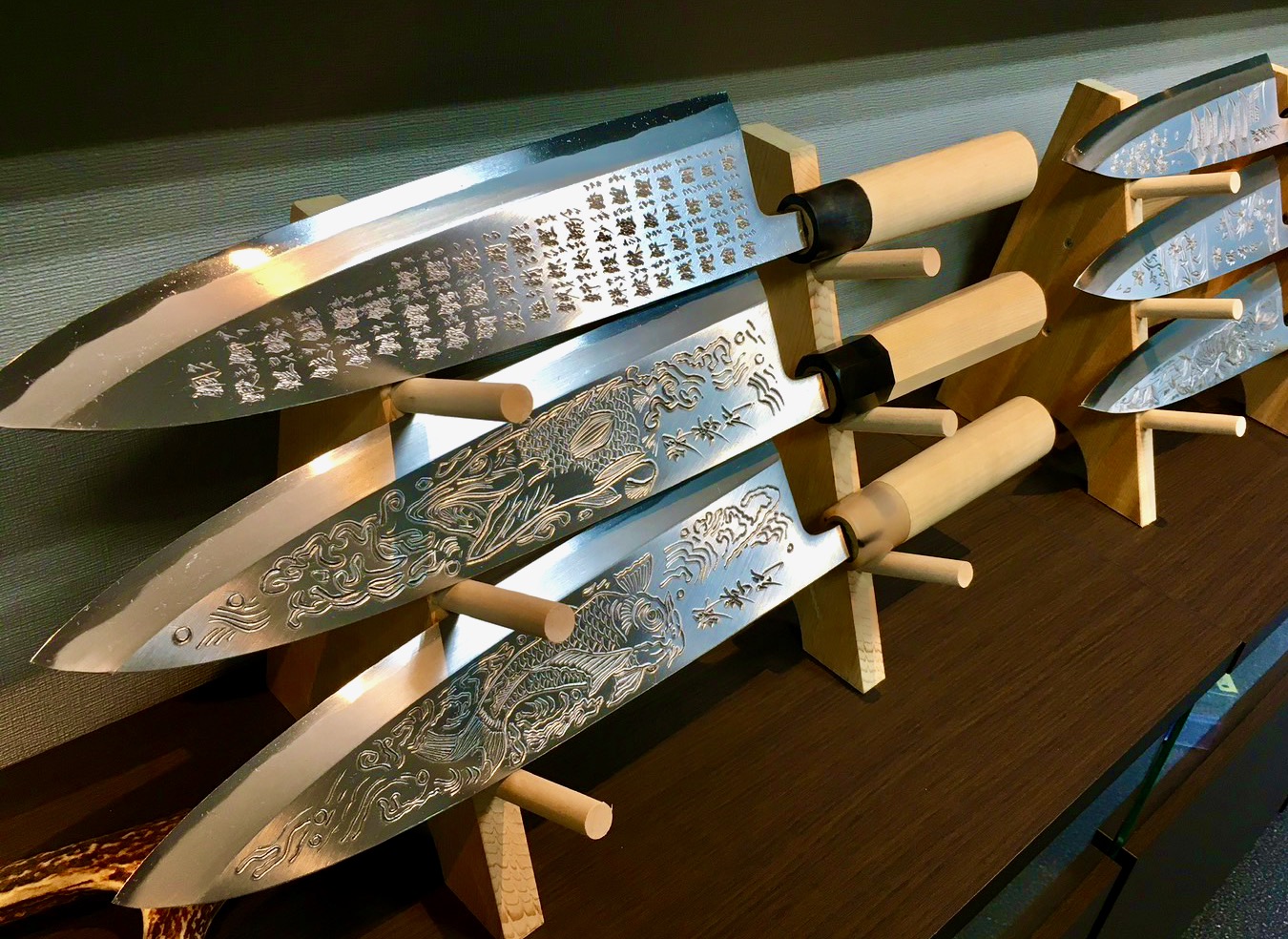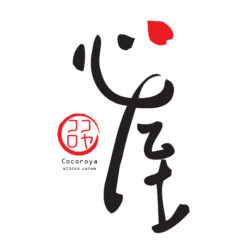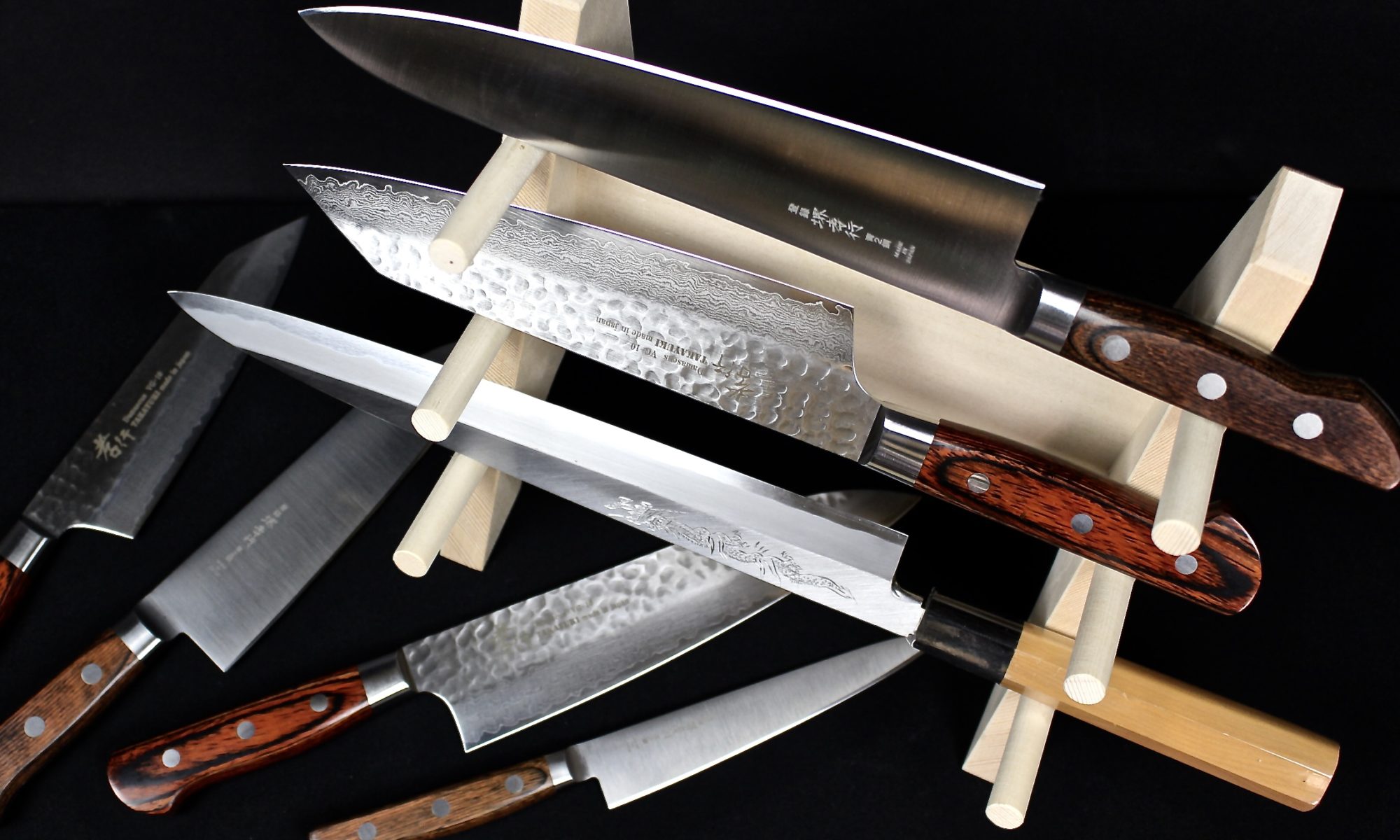Wa-Bocho 和包丁
New Japanese Hand-Made Kitchen Knives
How do we know about knives?

Yuji (owner of Cocoroya Niseko) is a chef by trade and we both have over 10 years experience as restaurateurs, both in Japan and Australia. In Australia we owned and operated Goemon, in Mosman, Sydney and Niseko Sushi Deli, in Niseko, Japan. We choose to sell Sakai Takayuki brand knives as Yuji has had his set of this brand for over 20 years and they are still as sharp as the day he bought them.
 Sakai Takayuki brand Japanese cooking knives are made by hand in Sakai, near Kyoto in Japan. The master craftsmen use the same Samurai-sword technology, skills and workmanship to hand-forge these knives.
Sakai Takayuki brand Japanese cooking knives are made by hand in Sakai, near Kyoto in Japan. The master craftsmen use the same Samurai-sword technology, skills and workmanship to hand-forge these knives.
The beautifully and meticulously made knives ‘glide’ rather than cut or slice and make cooking enjoyable and food taste better and last longer by preventing oxidization and keeping the luster and fresh appearance of the food.
Once you have used a high-quality Japanese knife it is probably fair to say there is no going back. Maintaining the blade is easy and sharpening instructions are available.
Knife blades come in various types of steel as well as both western and Japanese style handles. Japanese handles do not have a ‘grip’ as such, but they are designed to mould to your hand with continuous use. The timber handle is also designed to absorb the oils from cooking and will darken over time.
All knives are sharp when you buy them. Cheap, low quality knives loose their sharpness quickly and require constant sharpening. Good quality knives remain sharp for longer, require less sharpening and when they are sharpened, they can be brought back to their best.
Types of knife
There are hundreds of types and styles of knives in Japan. We stock knives that are reasonably priced as well as useful to a wide range of uses, in popular and practical styles. We can source more specialist knives as well as professional knives on request.
Which knife should I choose?
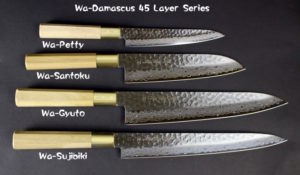
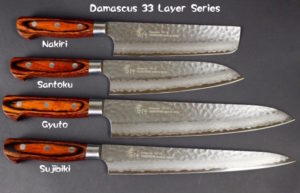
Decide what you will use the knife for, then choose the heaviest and biggest knife that you are comfortable handling.
Consider the type of steel. Corroding steels are sharper, but require more maintenance.
Japanese handle, or western-style handle? Japanese handles are lighter and mould to the shape of your hand over time. Western handles have a grip, that holds your hand in place on the handle.
Price equals quality. As the price increases, so does the quality of the steel. High quality steel knives retain the edge on the blade longer and require less sharpening. The more you spend on your knife, the better the quality will be.
Types of metal
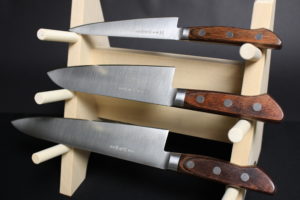
Generally speaking, the stronger the steel, the more corrosive it is. Japanese chefs tend to favour blue 2 steel blades which are sharper and stronger, but can also can rust easily without the proper care.
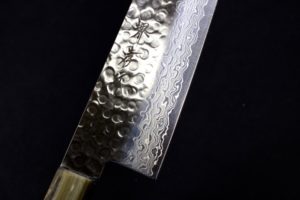
There are also many corrosion-resistant knives, such as Damascus steel, which are our most popular range. They are beautiful and low maintenance.
Damascus steel knives have visible layers of steel on the blade and many have hammered finishes.
They are made by folding numerous layers of steel and forging them together to form a strong, high-quality, durable, flexible and beautiful blade. They are perfect for home use, but are also used by professionals.
Some professional knives also contain silver, white 2 steel or silver 3 steel, and they require more maintenance , but cut exquisitely.
Japanese Knife Demonstration Video
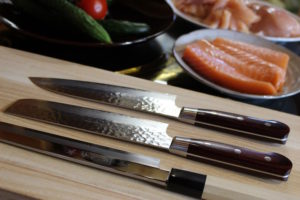 What can these knives do? How do you use them? CLICK HERE to watch our original video.
What can these knives do? How do you use them? CLICK HERE to watch our original video.
See a selection of our range of knives in action. Also see what a 25 year-old Sakai Takayuki knife can still do after continual use. Note: You will be directed away from this site.
(You can also change the settings on the video as it is in HD)
Sashimi knife
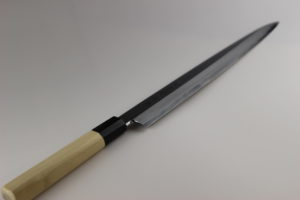
 Sashimi knives are typically long blades of 240-300 mm long, with a narrow blade. The knife is shaped this way so that the chef can slice a piece of sashimi in one continuous pull of the blade. Generally, this type of knife is only used for slicing sashimi and is not recommended
Sashimi knives are typically long blades of 240-300 mm long, with a narrow blade. The knife is shaped this way so that the chef can slice a piece of sashimi in one continuous pull of the blade. Generally, this type of knife is only used for slicing sashimi and is not recommended
for other jobs.
The sashimi knife comes in various steel finishes. Corroding steel (Blue 2 steel) is preferred by chefs as they are sharper and require less frequent sharpening.
They are also available in Damascus layered steel, which is similar to stainless steel and easy to look after.
Sheaths are available.
Deba – fish & meat filleting
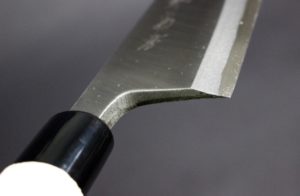

The Deba knife is a heavy-duty, thick-bladed knife of 150-240 mm. Typically, these knives are used to fillet, cut and clean fish and poultry as well as other cuts of meat. They are heavier to hold and very strong. They require less pressure on the blade than lighter or smaller blades. These knives are recommended for confident knife users who are comfortable using a heavy blade.
Santoku – all purpose
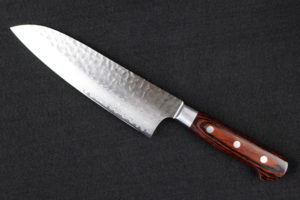
The Santoku knife is used for almost any kitchen job. The all-purpose blade is not overly long (medium sized) or heavy and easy to hold and handle. These knives are perfect for home use and or use in a commercial kitchen. These are the most popular type of knife as they are useful to everyone and can be used for most kitchen jobs. Every kitchen needs one Santoku knife.
Gyuto – all purpose chef’s knife

The Gyuto is similar looking to a Santoku, but generally it is considered more useful to a professional chef as it is longer and heavier, without being too heavy. These knives are also all-purpose and can be used for a variety of jobs. If you are comfortable using a larger knife, then this is the preferred knife for everyday use.
Sujibiki – Slicing / carving knife

The Sujibiki have a long, narrow blade and are perfect for slicing and carving a wide range of foods. The long blade glides beautifully and is easily handled. They are a lovely addition to a festive table when carving the main course. These blades can slice fine slithers or slices with ease and make carving in front of guests
Usuba / Nakiri – Vegetable knife
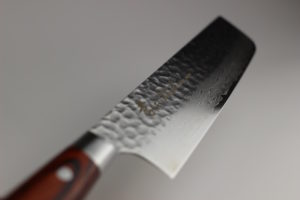
The Usuba or Nakiri knives have a more rectangular shaped blade and are typically used to peel, prepare and chop vegetables. They are capable of finely shaving various vegetables.
The rectangular shape of the blade allows greater contact with the vegetable surface, allowing uniform slicing, chopping and shaving and speeding up the preparation process.
Slightly shorter than the Santoku – all purpose knife, they are also not too heavy and very easy to use. Great for home use or also for commercial kitchens.
Petty / Utility Knife

These knives have a shorter and thinner blade than the other styles. They are light-weight and mainly for home use for a variety of cooking jobs that do not require a heavy blade. They are also perfect for preparing fruit, snacks and light meals. Many people like this style as it is easy to handle and the size of the blade is not intimidating or heavy.
Watch our video on how the knives are made
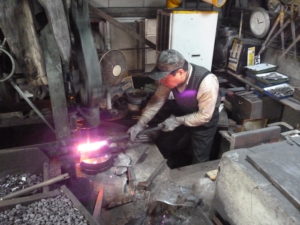 How are these amazing knives made? CLICK HERE to watch our video.
How are these amazing knives made? CLICK HERE to watch our video.
The skill required to make such precision tools has to be seen to be believed. The whole process is done by eye with the blacksmith pounding the metal until the knife is created.
The extraordinary attention to detail in the making process is what makes these knives so special and superior to other brands.
Sharpening and Maintenance Video
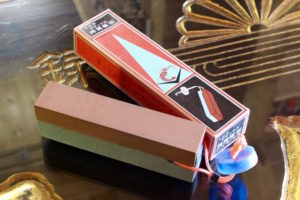 How do you sharpen Japanese knives? CLICK HERE to watch our video.
How do you sharpen Japanese knives? CLICK HERE to watch our video.
Note: You will be directed away from this site.
(You can also change the settings on the video as it is in HD)
CARE:
Do not put your knife in the dishwasher.
Hand wash only.
Keep the surface clean and dry at all times.
Do not use steel wool or any abrasive cloths or cleaning solutions.
Do not use the blade other than for its intended purpose.
Keep the blade sharp according to sharpening instructions.
